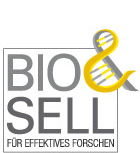The alternative to labor intensive polyacrylamide gels.
The Bio&SELL high resolution agarose is specially optimized for the separation of nucleic acids in the range of 20 to 800 base pairs.
Based on the average melting temperature extremely high resolution is achieved in the abovementioned size range 20 bp to 800 bp.
Typical applications include studies of:
- RFLP (restriction fragment length polymorphism)
- AmpFLPs (amplified fragment length polymorphism)
- HVR (hyper-variable regions)
- VNTR (variable numbers of tandem repeats)
- STR (short tandem repeats)
- Tri and tetra-nucleotide repeats
- Exact analysis of PCR products
- DNA proof of identity
Thus, the Bio&SELL high resolution agarose is the convenient alternative to poly-acryl amide gels.
benefits:
- Reduced labor
- Much cheaper than the poly-acryl amide gels
- No handling of toxic substances such as PAA
| Product | Article No. | Quantity |
|---|---|---|
| High resolution Agarose | BS.20.48.025 | 1 x 25g |
| BS.20.48.100 | 1 x 100g | |
| BS.20.48.250 | 1 x 250g |
Protocols
Guaranteed properties of the high-resolution agarose:
- Gel strength (1.0%):> 300 g / cm2
- Gelling (1.5%):
- Electroendosmosis (-mr): <0.5
- Water content: <10.0%
- DNA binding: not detectable
- DNase and RNase activity: not detectable
Like all Bio&SELL agaroses each batch of Bio&SELL high-resolution agarose undergoes a strict quality control on all relevant parameters such as gel strength, gelation temperature, electroendosmosis values, sulfate content and water content. Each Bio&SELL standard agarose batch is free of RNases, DNases and enzyme inhibitors.
The specific values of each batch are certified in the attached data sheet.
Preparation of a standard agarose gel:
For 100 ml of a 1% agarose gel, 1 g of agarose is prepared in 100 ml of electrophoresis buffer. After dissolving the agarose by heating and a cooling phase, you can pour the gel.

